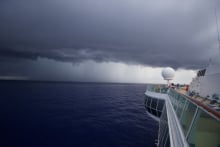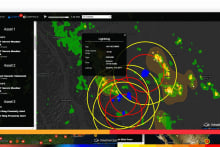Royal Caribbean has a new weather expert on staff who's job it is track bad weather and ensure cruise ships aren't near potential problems.
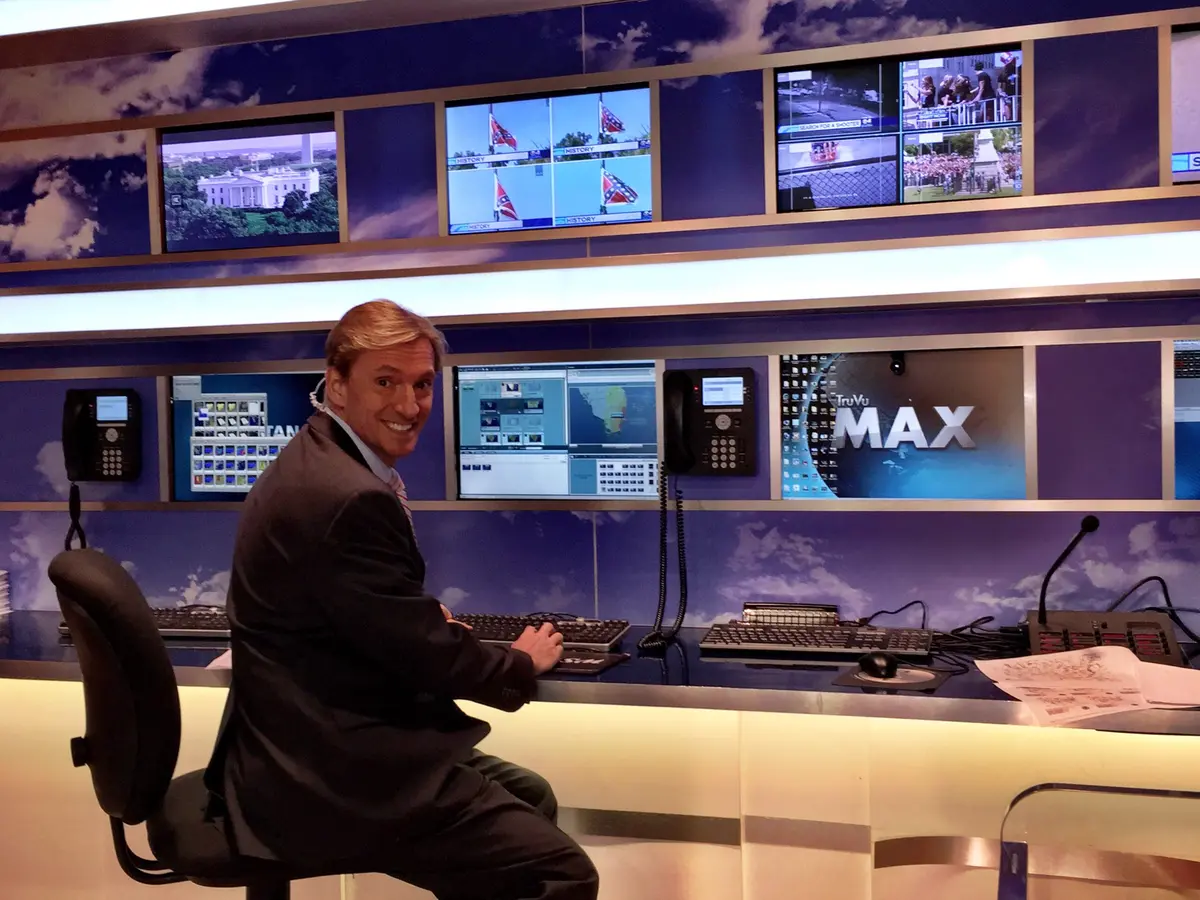
Craig Setzer is the company's new Chief Meteorologist, and as as we know, the only chief meteorologist working in the cruise industry.
Mr. Setzer took on his new role in August, and has over 25 years of experience in the field. He's an Emmy-winning former TV Meteorologist, having worked at CBS News and a few local television stations. In fact, he was CBS' Chief Meteorologist.
He also remains involved with the National Hurricane Center, teaching at World Meteorological Organization workshops, and presenting at American Meteorological Society conferences around the country.

Following his television career, he spent considerable time in providing his expertise in court cases related to marine weather, atmospheric lighting and visibility, storm-related damage and losses, wind drift, and human exposure in extreme conditions.
Mr. Setzer posted on his Twitter account that working with Royal Caribbean is a dream role, "It’s a dream job utilizing my tropical & marine meteorology experience and allowing me to explore/advance operational maritime science in a way I couldn’t before."

According to Royal Caribbean Group's job posting for the Chief Meteorologist position earlier this year, Mr. Setzer will be responsible for providing expert analysis of weather systems, such as hurricanes, typhoons and any other kind of severe weather that could impact cruise ship sailings.
His guidance to the fleet with weather-related support and guidance is what ensures ships can alter itineraries, or simply take a different route to ensure a safe and comfortable experience for passengers.
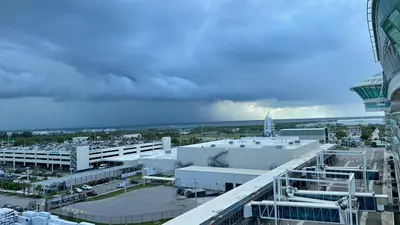
Royal Caribbean was the first line to create the role of a meteorologist following a weather-related incident involving a Royal Caribbean ship in 2016.
Historically, cruise lines used outside vendors to provide them with forecasts.
After an internal investigation of the unsettling event, the cruise line decided they needed an in-house, dedicated resource.
Since then, the cruise line decided it was time to mitigate the chances of that sort of event from happening again by hiring someone in-house to provide better direction.
Royal Caribbean's first Chief Meteorologist, James Van Fleet, also came from a television background, and worked in the role from its inception until earlier this year when it was announced he was leaving the position.
Already busy tracking storms

If Mr. Setzer's social media postings are any indication, he's been busy tracking weather events in just the first few weeks on the job.
Hurricane Hilary is headed towards California, and he's been sharing key details about the intensity of the storm and what people can really expect.
He debunked some headlines related to the storm, sharing that he expects the storm to be much weaker by the time it reaches the United States.
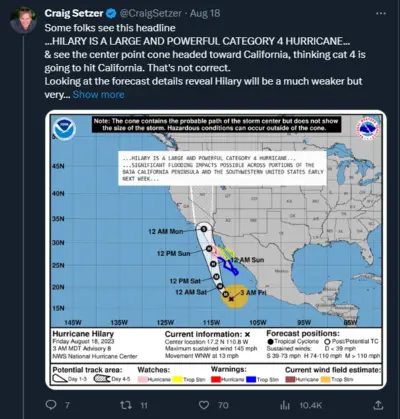
"Some folks see this headline,
...HILARY IS A LARGE AND POWERFUL CATEGORY 4 HURRICANE...
& see the center point cone headed toward California, thinking cat 4 is going to hit California. That's not correct."
"Looking at the forecast details reveal Hilary will be a much weaker but very wet storm by the time it reaches the US. Flooding will be main threat for Calif, AZ, much of the western US."
Royal Caribbean's Navigator of the Seas had her itinerary changed, and Mr. Setzer was involved in that decision.
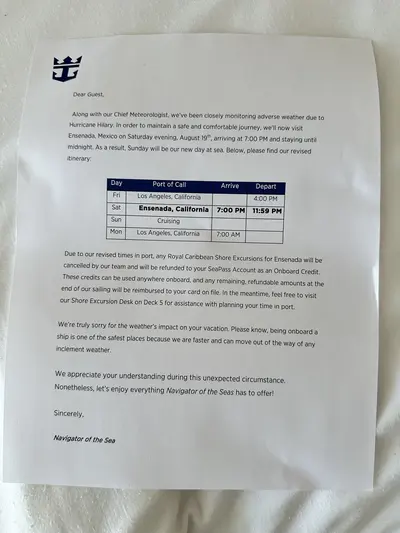
RoyalCaribbeanBlog reader YoungFamilyExplorers shared a photo of a letter sent to passengers onboard the cruise ship with the new times in port, and the decision was made with the assistance of the Chief Meteorologist.
Of course, he's also focused on the Atlantic for tropical storm development. Hurricanes in the Atlantic are usually where the greatest impact to itineraries occur.
The U.S. government's National Oceanic and Atmospheric Administration (NOAA) originally predicted a "near-normal" year with 12 to 17 named storms for the 2023 hurricane season, with five to nine would become hurricanes.
NOAA increased its forecast on August 10 to a prediction of an "above normal" year for hurricanes, because of record-warm sea surface temperatures.
The new prediction is for 14 to 21 named storms for the season as a whole, of which six to 11 could become hurricanes. Two to five could become major hurricanes, according to NOAA.
The Atlantic hurricane season runs between June 1 and November 30.





